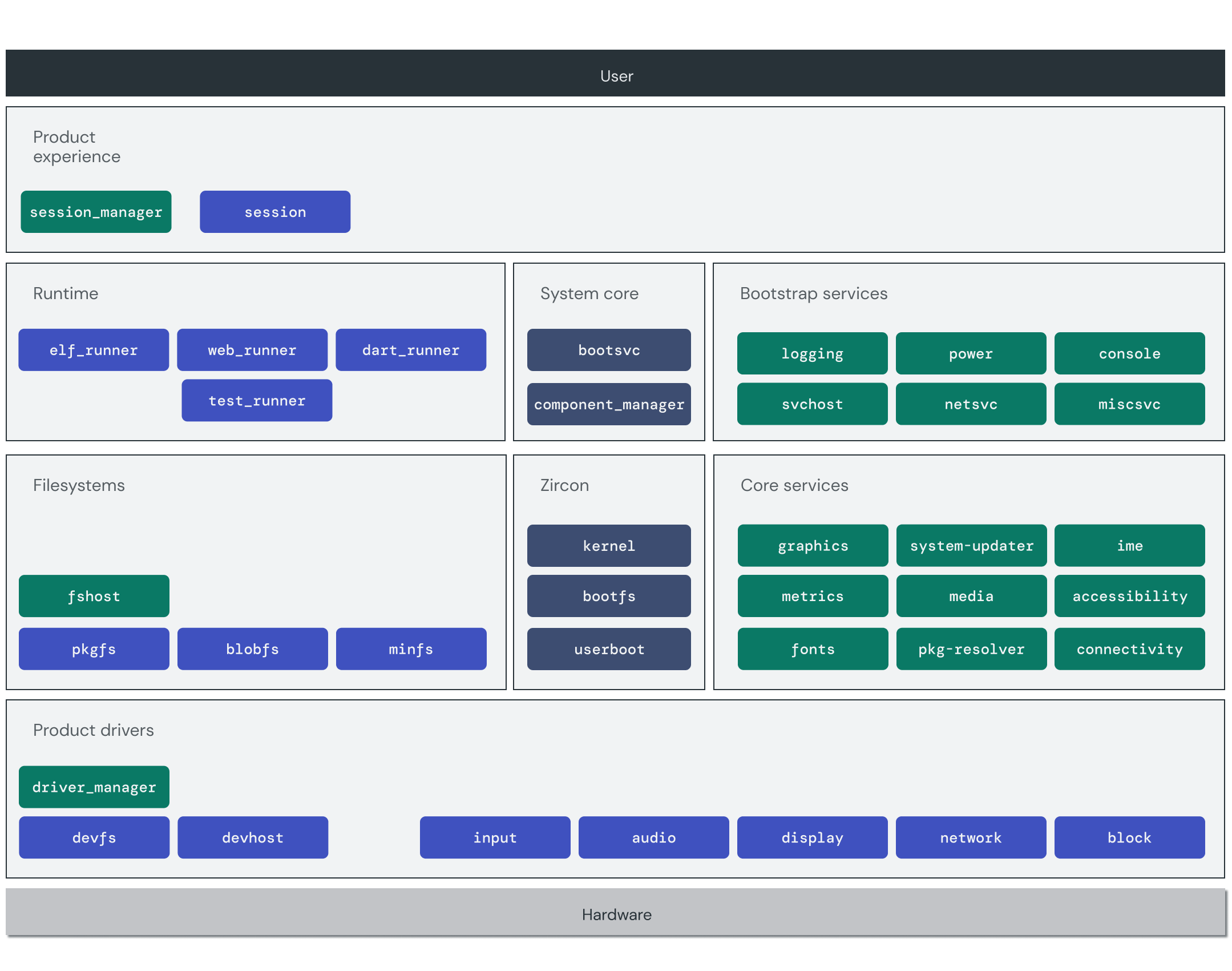Fuchsia architecture
The following architectural principles guide Fuchsia's design and development:
Simple:
Fuchsia makes it easy to create, maintain, and integrate software and hardware across a wide range of devices.
Secure:
Fuchsia has a kernel and software model designed for modern computing.
Updatable:
As a modular operating system, Fuchsia allows the kernel, drivers, and software components to be independently updatable.
Performant:
Fuchsia is designed for real world product requirements and optimized for performance.

The core of the system is
Zircon
, a kernel and collection of
libraries for handling system startup and bootstrapping.
All other system components are implemented in user space and isolated,
reinforcing the principle of least privilege. This includes:
- Device drivers
- Filesystems
- Network stacks
Except as otherwise noted, the content of this page is licensed under the Creative Commons Attribution 4.0 License, and code samples are licensed under the Apache 2.0 License. For details, see the Google Developers Site Policies. Java is a registered trademark of Oracle and/or its affiliates.
Last updated 2025-03-21 UTC.
[[["Easy to understand","easyToUnderstand","thumb-up"],["Solved my problem","solvedMyProblem","thumb-up"],["Other","otherUp","thumb-up"]],[["Missing the information I need","missingTheInformationINeed","thumb-down"],["Too complicated / too many steps","tooComplicatedTooManySteps","thumb-down"],["Out of date","outOfDate","thumb-down"],["Samples / code issue","samplesCodeIssue","thumb-down"],["Other","otherDown","thumb-down"]],["Last updated 2025-03-21 UTC."],[],[]]

